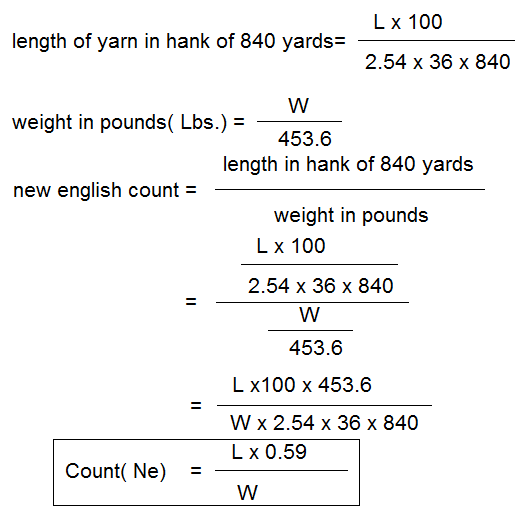Yarn count has two types: Direct and Indirect system. In the Indirect system, the count of yarn is expressed through nm, ne. It is the expression of the number of length units in one unit of weight. The system is used for cotton, worsted, woolen, and linen. In this article, the particular nm or metric count and ne, cotton, or English count will be discussed.
What is Yarn Count (nm)?
Yarn count (nm) refers to the metric count. It is expressed on how 1kg weight of yarn can contain how many numbers of hanks of 1000 meters. The metric count is denoted by Nm, nm. The formula is:
Nm is equal to (=) length in meters/ 1000 x Weight in Kgs
What is Yarn Count (ne)?
Yarn count (ne), known as cotton count or New English Count refers to the number of hanks of 840 yards presented in 1lb of the yarn weight. This yarn count name is cotton count because this system is used to express the fineness of the cotton yarn. The higher the yarn count, the finer the yarn gets in this system. The yarn count is calculated in:

The Conversion from nm to ne or, Metric to English Count
Here is the conversion chart to convert from Metric to English count system:
| tex | dtex | den | Nm | Ne | |
| Nm | 1000/Nm | 10 000/Nm | 9000/ Nm | – | 0.59 x Nm |
| Ne | 591/Ne | 5910/ Ne | 5314/ Ne | 1.69 X Ne | – |
Conclusion
Metric (nm) and English yarn(ne) counts are systems for measuring yarn fineness. The former, denoted as tex, represents the weight (in grams) of 1,000 meters of yarn. In contrast, English count measures yarn length (in yards) per unit weight (in ounces). The conversion between the two requires mathematical computations based on these different measurement units.


